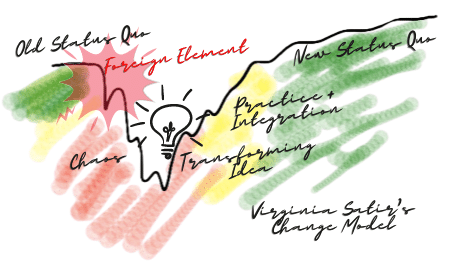I’ve been hearing various people speculate about how work will look after things get back to normal. (First, they aren’t going to go “back” to normal. There will be a normal, but I doubt it will be what existed pre-pandemic.) It does seem likely that remote work will become more common.
People will have gotten over the idea that it can never work. People will have learned to be effective in remote work. Maybe companies will have invested in the tech for robust support for remote work (we can hope). Some companies may see it as a cost-saving measure.
And yet… in spite of all the research on intrinsic motivation, some managers will worry that without someone watching, people won’t work hard. Some managers won’t be able to trust that people will do their work without a watcher. But how can a watcher watch, when they can’t see whose car is last to leave the parking lot? When they can’t count butts in seats? And look over shoulders?
Surveillance
Surveillance software, of course! (This is already happening. Apparently managers in some companies are scrambling to buy software to track their newly remote employees.)
Companies who sell such products promise productivity—and profit! There are cases where employee tracking has prompted improvements.
For example, in one hospital they discovered that not enough meds were stocked for overnight. I’ll bet the nurses already knew that. Maybe their bosses needed data before they’d believe it.
Small improvements over a large workforce add up. Switching to electronic locks vs keys in delivery trucks added up to a significant savings over a year. Was pervasive monitoring of every action necessary to discover that?
In work that involves thinking, research, collaboration, neither number of keystrokes, nor hours spent at the computer are indicators of quality or success. But still managers try surveillance.
A manager brought in to improve efficiency decided to monitor keystrokes and time at desk. The workers in this case were attorneys drafting opinions for an appellate court. Research didn’t count, conferring didn’t count, thinking didn’t count. If all their work was done and there were no more opinions to research or draft, they were still expected to sit at their desks. Tapping at something.
Consequences
People often interpret pervasive monitoring as a sign of distrust. And often it is. Distrust begets distrust, creating a downward spiral.
People who feel mistrusted usually return the favor. With each spin around that spiral, the wedge between managers and non-managers goes deeper. That has consequences.
Pervasive monitoring removes autonomy and discretion. That has consequences.
People will try to evade the surveillance. That has consequences.
The proponents of monitoring say it will provide managers with valuable insights about who is most efficient and warning that someone is struggling with their work.
Competent managers don’t need intrusive monitoring to know who is struggling. And individual efficiency isn’t nearly as important as team effectiveness.
With surveillance, employees may feel watched. But they may not feel seen as unique and valued individuals. That has consequences.
Update: Great article on this topic from Jeffrey Pfeffer.








Hi Esther! Thanks for publishing such a great article once again. Have you seen this terrible solution from Splunk, targeting Executives/managers with exactly what you mention in mind.
Ugh. Since I published this post, I’ve gotten a ton of requests from surveillance software companies asking me to link to their articles and requesting guest posts. I guess they didn’t read the whole thing.